Loads of us ride in high-visibility jackets (usually abbreviated to ‘hi-vis’ or ‘hi-viz’), especially after dusk and in dull weather conditions, to try to make sure we’re seen by other road users. The road.cc team has spent thousands of hours riding in the dark to find out which are the best hi-vis cycling jackets you can buy.

The best hi-vis cycling jacket overall: Proviz Nightrider Men's Reflective and Waterproof Jacket

The best hi-vis cycling jacket for winter comfort (women's): Gore Tempest Windstopper Jacket Women’s

The best hi-vis cycling jacket for commuting: Altura Nightvision Storm Waterproof Jacket

The best hi-vis cycling jacket for winter comfort (men's): Santini Adapt Multi - Jacket

The best hi-vis cycling jacket for value: Galibier GrandTour Jacket

The best hi-vis cycling jacket for all-weather training: Castelli Perfetto RoS 2 Jacket
As well as helping you stand out, hi-vis jackets for cycling offer insulation, waterproofing and/or windproofing to make your riding a more comfortable experience.
While there are studies that suggest hi-vis clothing doesn’t always ensure cyclists are visible on the road, other studies indicate that it could increase the distance at which drivers can detect you.
The Highway Code says, “Light-coloured or fluorescent clothing can help other road users to see you in daylight and poor light, while reflective clothing and/or accessories (belt, arm or ankle bands) can increase your visibility in the dark.”
There’s no legal requirement to wear hi-vis clothing but most people have clearly decided that a hi-vis jacket can’t do any harm; if you’re going to wear a jacket for cycling anyway, why not make it one that could increase your visibility? For that reason, hi-vis jackets are hugely popular and there’s loads of choice, with prices starting from about £30.
The best hi-vis jackets combine bright fabrics with lots of reflective material. Hi-vis jackets can be waterproof hardshells, lightweight windproofs or made from softshell fabrics for warmth.
Many hi-vis jackets for cycling are aimed at commuting riders so they come in a fairly relaxed cut, but there are close-fitting versions for sports riding and training too. In fact, whatever type of cycling jacket you’re looking for, chances are that there will be plenty of high-vis options available to you.
If you’re looking for a cycling jacket and you’re not specifically after hi-vis, check out our guide to the best cycling jackets.
To find out how road.cc reviews products, and for more information on how we put our buyer's guides together, take a look at this article.
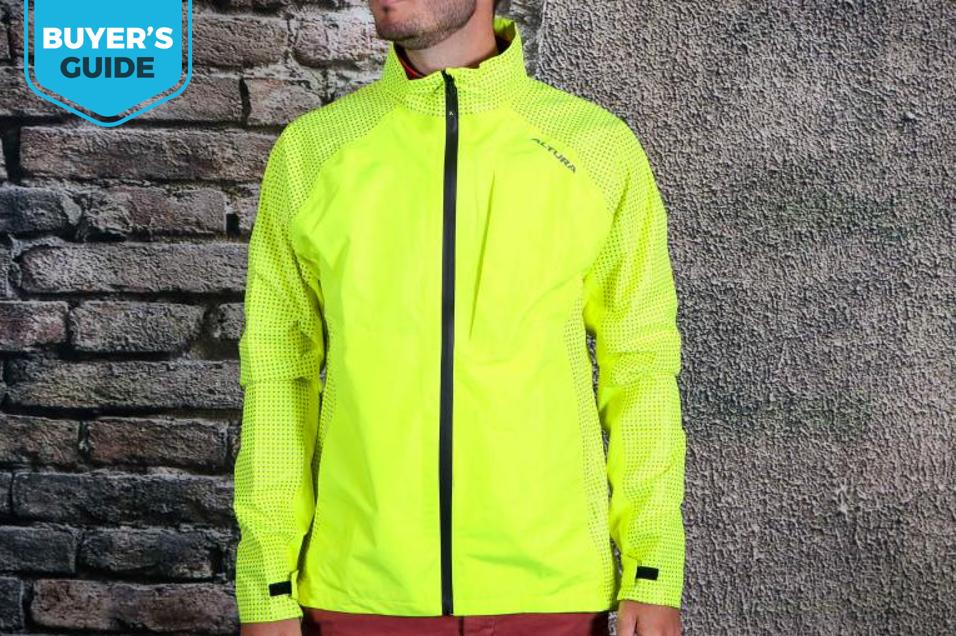






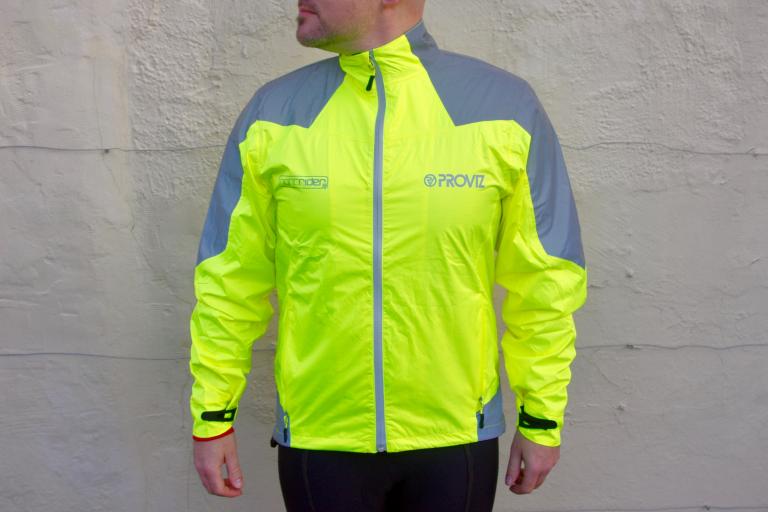

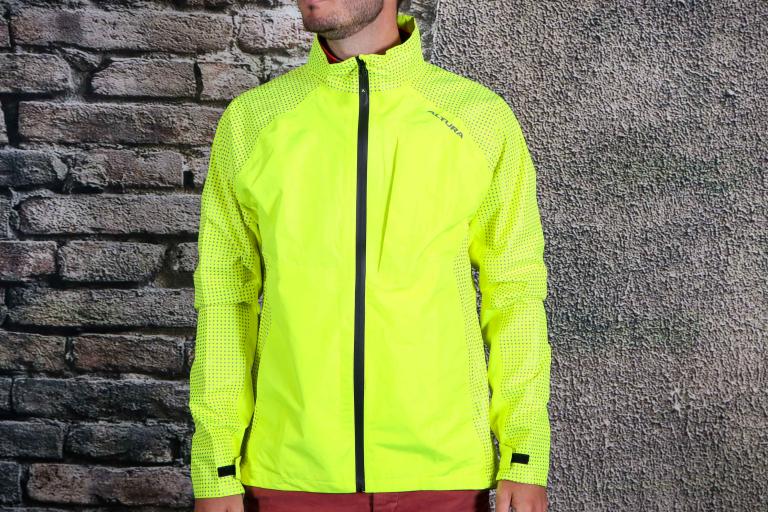




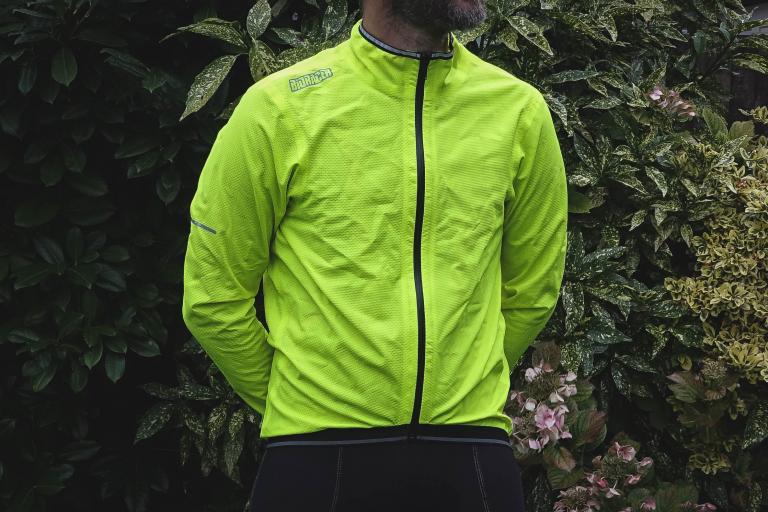
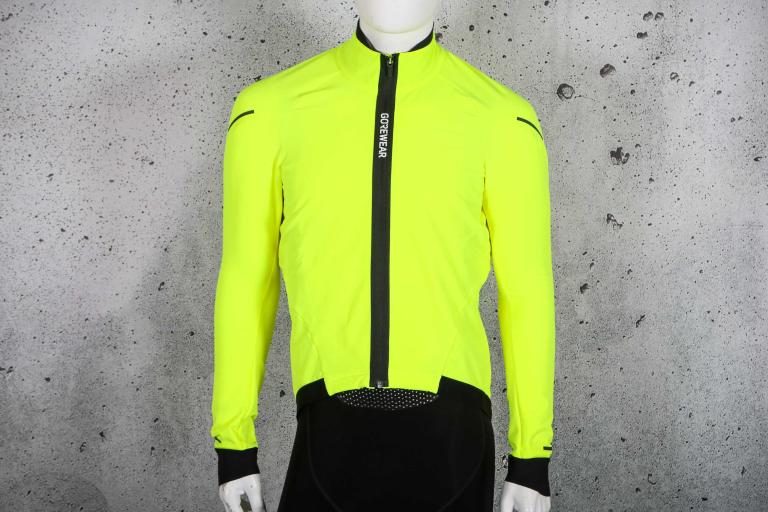

Add new comment
10 comments
Does the "super-loud yellow" also help alert (non-deaf / non-earbud-wearing) pedestrians? Or will it just mean dogs bark at me?
"Be Safe in Low Light Conditions?'' Really? Where's the evidence for that? "Be Safer in Low Light Conditions'' might have been better. Hi-Vis, arguably, ups the odds a motorist will see and avoid you. But exactly what protection does hi-vis offer against the boob with his or her attention fully focused on a screen?
Every single photo is showing the front, now whilst that's important you as a rider have eyes, brakes and a brain so to a certain degree you can control / react to the wazzocks in front of you. What you have little control of are the pillocks coming up fast behind you. What do these jackets look like from behind?
That Gore Phantom has a black back! The Proviz Nightrider has lots of reflective stuff on the shoulders, but that not much use from behind if you're bent over the bars and most have little or no reflective panels low down, i.e. on your bum which is where car lights are most likely to pick up first.
Er - the Proviz has a mahoosive reflective panel right across the 'bum drop'.
My point exactly with only having photos of the front of the jackets, it only tells half the story. The 'bum drop' reflective panel is a great idea and shows someone has thought about it when designing the jacket, so why not have photo of it or at least mention it as an additional safety / selling point.
Such as, for example, saying: "It’s made from two types of fabric: super-loud yellow (orange is also available as a colour option, as is pink in the women’s version) and Proviz’s Reflect360 fabric at the shoulders and tail. "
I have a Nightrider and it's all reflective from the hips down at the back. Yes the Phantom is black from below the shoulder blades but the arms are still yellow with reflective details all the way round and they can be seen whatever position you're in. Additionally it has a substantial reflective strip running down the spine between the pockets. Anyway, unless you are going out training on a low profile TT bike after dark (in which case the question is why?) drivers can see your shoulders whatever bar positioning you are using.
Are these actually 'hi-viz' - or just brights?
Words like 'enough reflectives to get you noticed dont actually mean anything... its how many and where the reflectives are that makes a difference.
Would it be better to have a standard daylight photo [as above], and then a low-light photo taken with a flash / car head light of the back of the jacket and preferably with it being worn by someone sitting on a bike?
I've found that many of these reflective strips on clothing are obscured, in the wrong place or just too small to be of any real use, so maybe a 'what the guy behind sees' photo would be useful.
There are two British Standards for HiVis Garments BS EN 471 and BS EN 1150. The BS EN 1150 standard is designed for personal / leisure wear and is considered to be less effective than BS EN 471.
BS EN 471 sets more demanding minimum standards of visual performance and durability needed for high visibility clothing worn in the course of a trade or profession and is mandatory . Compliance with BS EN 471 ensures that the wearer is as visible as possible against varying backgrounds in ALL weather and lighting conditions, and that the garment is durable.
I am pretty certain that none of the garments above meet the BS EN 471 Standard, and none of them were described in the article as meeting the BS EN 1150 standard.
Why does this matter to cyclists?
Many organisations and individuals want to see cyclsts required to wear Hi vis. If legislation to this effect is introduced It would be to the EN471 standard. Cyclists would essentially have to wear a HiVis uniform. (Motorcycle helmets and seat belts have to conform to British standards)
Like many cyclists I have had near misses when wearing Hi Vis. Imagine the worst scenario and Mr Loophole is defending a driver who has caused a KSI. "M'Lud, If only the cyclist was wearing a garment which met the British Standard for visibility" The Victim blaming status quo is hard to kill!
Your gentle reminder that "excellent fit" only applies to the person who tried it.